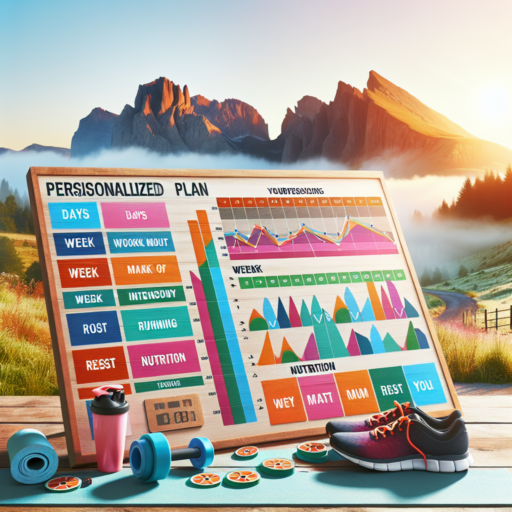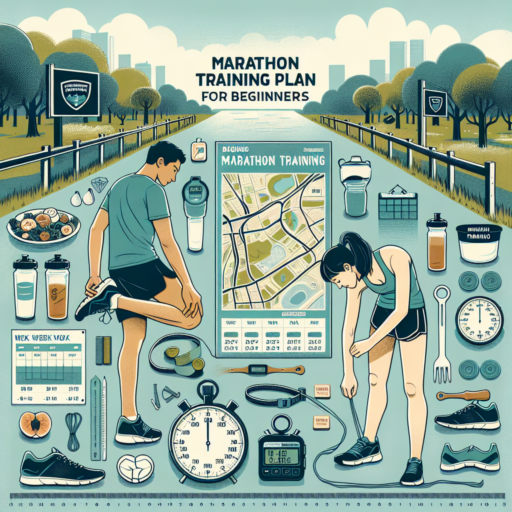Understanding Boston Marathon Pacing Strategies
The Boston Marathon, one of the most iconic long-distance races in the world, presents unique challenges and opportunities for runners. Developing effective pacing strategies is key to conquering its demanding course. This discussion delves into the core aspects that influence pacing strategies, focusing on the variegated terrain and the psychological battles runners face.
Adjusting to the Course Topography
The Boston Marathon’s course is notorious for its varying elevation, including the renowned Newton Hills and Heartbreak Hill, which test even the most seasoned runners. Pacing here requires a nuanced approach. It is recommended to start conservatively, saving energy for the latter hills and the final miles. Runners should focus on maintaining a steady effort, rather than a steady pace, adapting their speed to the course’s elevation changes to manage their energy reserves efficiently.
Tailoring Strategies to Marathon Experience
The experience level of a runner plays a significant role in crafting a successful pacing strategy for the Boston Marathon. Veterans of the race often have the advantage of knowing firsthand the physical and mental demands of the course, which allows for a more personalized approach to pacing. Meanwhile, first-time Boston runners should focus on adaptability, being prepared to adjust their pacing plan in response to the race’s unfolding challenges. This adaptability should include being ready to tackle the hills efficiently and conserve energy for a strong finish.
No se han encontrado productos.
Optimal Pacing Tips for the Boston Marathon
The Boston Marathon, renowned for its challenging course, demands a strategic approach to pacing. Knowing how to correctly pace yourself is key to not only finishing but also enjoying one of the most prestigious running events in the world. The following tips aim to help runners find their optimal pace, ensuring they cross the finish line with satisfaction and perhaps even a personal best.
Understand the Course Profile
Researching the course ahead of time is crucial. The Boston Marathon features notorious hills, including Heartbreak Hill, which can make or break your race. Structuring your pacing strategy to accommodate these elevations will help conserve energy. Runners should aim to maintain a steady effort rather than a steady pace. This means possibly slowing down on uphills and gently accelerating on downhills to manage exertion levels effectively.
Adapt Your Strategy
Flexibility in your pacing plan allows for adjustments based on weather conditions and physical state on the day. If you’re confronted with unexpected heat or strong winds, it may be wise to dial back your initial pace. Listening to your body is paramount; if you’re feeling strong, you may cautiously increase your speed in the latter stages of the race. However, starting conservatively and gradually building up your pace can be a sensible approach to avoid burning out early.
Run Your Own Race
Finally, while it’s easy to get swept up in the energy of the marathon and start too fast, it’s essential to focus on your own race. Comparison to other runners can be detrimental to your pacing strategy. Trust in your training and stick to the pacing plan you’ve prepared for. Finding a rhythm that feels comfortable and sustainable for you is key to achieving optimal pacing in the Boston Marathon.
How to Calculate Your Perfect Boston Marathon Pace
Finding your ideal pace for the Boston Marathon is crucial for a successful race day. It’s about balancing speed with endurance to avoid burning out too quickly. The first step is understanding your current running capabilities. Whether you’re aiming for a personal best or looking to enjoy the course comfortably, calculating your marathon pace is key.
To begin, it’s important to establish your recent race times. Look at your latest 5K, 10K, half-marathon, or marathon times. These results provide a solid foundation for estimating your marathon pace. A variety of online calculators can help you translate these times into a projected pace for the Boston Marathon. They factor in variables such as race distance and elevation changes, specific to the Boston course, offering a tailored pace strategy.
Key Elements to Consider
- Current Fitness Level: Assess your current running condition through recent race times or regular training speeds.
- Course Specifics: The Boston Marathon’s unique course features, like Heartbreak Hill, should influence your pace planning.
- Weather on Race Day: Boston’s unpredictable April weather can impact performance, requiring pace adjustments.
Once you have a base pace in mind, integrate it into your training runs. Experimenting with this pace during long runs can help assess its feasibility over 26.2 miles. Remember, the goal is to maintain a consistent effort throughout, adjusting for variables like hills and energy conservation. With the right preparation, calculative approach, and mental readiness, you’ll set yourself up for a successful Boston Marathon experience.
The Impact of Boston’s Hills on Your Marathon Pace
Running a marathon in Boston presents a unique challenge to athletes of all levels due to the city’s notorious hills. These elevations have a significant impact on a runner’s pace, energy conservation, and overall strategy. One of the most critical factors in maintaining a steady marathon pace is understanding how these undulating terrains affect your run.
Firstly, the inclines and declines of Boston’s topography demand a higher level of energy expenditure. Runners must adjust their pace to conserve energy, especially during the early stages of the marathon. This adjustment means sometimes slowing down significantly on uphills to save energy for later miles. On the other hand, the downhills, while potentially faster, require careful navigation to prevent injury and control pace. It’s a delicate balance that can drastically alter a runner’s performance.
Moreover, the strategy for tackling these hills is paramount. Experts recommend training on similar terrain before race day to adapt your body and refine your hill-running technique. Pace adjustment on hills, focusing on effort rather than speed, and using the downhills to recover without overstriding are crucial elements for a successful Boston Marathon run. The variance in elevation challenges runners to adapt quickly, making hill training an essential part of marathon preparation.
Training Plans Focused on Boston Marathon Pacing
When preparing for the iconic Boston Marathon, understanding and developing a pacing strategy through specialized training plans is paramount. These training plans are meticulously structured to not only improve your endurance but also to tailor your pace for the varying terrains and challenges presented by the Boston Marathon course. A well-crafted plan focuses on building a runner’s stamina, speed, and resilience, ensuring they can maintain a consistent pace throughout the race.
Key components of these training plans include targeted workouts, such as tempo runs, interval training, and long-distance runs, which simulate the conditions of the Boston Marathon. Each workout is designed with the specific purpose of enhancing the runner’s ability to maintain their pacing strategy under different race day scenarios. This holistic approach ensures that athletes can tackle Heartbreak Hill and other demanding segments of the marathon without losing significant time.
Adopting a training plan that emphasizes Boston Marathon pacing requires dedication and discipline. Runners must commit to a structured regimen, gradually increasing their mileage and intensity in the months leading up to the event. This incremental approach helps to prevent injury while steadily improving performance, a critical aspect for those aiming to conquer Boston’s challenging course. Through consistent training, athletes can achieve optimal pacing, which is crucial for reaching the finish line with a strong and competitive time.
Avoiding Common Pacing Mistakes at the Boston Marathon
Running the Boston Marathon is a pinnacle of achievement for many marathoners. Yet, a successful race hinges not just on the miles logged in training but also on the execution of a smart pacing strategy on race day. Avoiding common pacing mistakes can make the difference between a triumphant finish and a challenging day on the course. Here, we delve into strategies to help runners maintain a steady pace and achieve their Boston Marathon goals.
Start Conservatively
One of the most frequent pacing mistakes is starting too fast, a tempting error with the downhill start of the Boston Marathon. The adrenaline rush and excitement at the starting line can lead runners to push the pace early on. However, starting conservatively and saving energy for the latter stages of the race is crucial. It’s important to remember that the course’s challenges, including Heartbreak Hill, lie ahead. By pacing yourself wisely in the early miles, you conserve the energy needed to tackle these obstacles effectively.
Understand the Course Profile
To avoid pacing errors, familiarize yourself with the Boston Marathon’s unique course profile. The course features varying elevations, with notable downhills and taxing uphills, particularly in the second half. Runners should tailor their pace to these changes in elevation rather than attempting to maintain a constant pace throughout. Adjusting your speed to navigate downhills with care and tackling uphills with a steady, measured effort can prevent the early onset of fatigue and keep you running strong to the finish.
Listen to Your Body
Lastly, successful pacing requires tuning into your body’s signals on race day. Weather conditions, such as unexpected heat or humidity, and how you feel can affect your pacing strategy. It’s essential to be flexible and adjust your pace accordingly, rather than strictly adhering to predetermined splits. Staying attuned to your body’s needs and responding with adjustments in your pacing will help you manage your energy reserves and maintain a strong performance throughout the race.
The Role of Weather in Planning Your Boston Marathon Pace
Understanding the pivotal role of weather in planning your pace for the Boston Marathon cannot be overstated. Whether you’re a first-timer or a seasoned marathoner, the unpredictable Boston weather in April poses unique challenges. Varying conditions such as temperature, humidity, wind speed, and precipitation significantly affect marathon performance, making weather forecasting an essential tool for participants.
Temperature plays a crucial role in how runners should plan their pace. Optimal running conditions are often described between 50°F and 60°F. However, Boston’s weather can dramatically vary from cold mornings to unexpectedly warm afternoons. Adapting your pace according to these temperatures is critical for conserving energy and preventing overheating, which can lead to exhaustion or heat-related illnesses. Monitoring the forecast in the days leading up to the marathon enables runners to prepare mentally and physically for the conditions they will face.
Wind and precipitation are additional factors that can affect your marathon pace. Headwinds can significantly slow runners down, while tailwinds can provide a much-needed boost. Similarly, rain can lead to slippery conditions, affecting stride and stability. Planning for these variables by adjusting your pace and being prepared with the appropriate gear can make a notable difference in your performance and enjoyment of the race. Considering these weather-related aspects is crucial for developing a successful pacing strategy for the Boston Marathon.
Professional Runners’ Advice on Pacing for the Boston Marathon
The Boston Marathon, with its unique profile and challenging weather conditions, requires a specialized approach to pacing. Professional runners emphasize the importance of a carefully planned pace strategy to tackle this prestigious race effectively. Below, renowned athletes share their insights on how to maintain an optimal pace throughout the marathon.
Understanding the Course’s Challenges
The first step in perfecting your pacing strategy is to acknowledge the distinctive features of the Boston Marathon course. It starts with a descent, tempting many to set off too quickly, which can lead to early fatigue in the more demanding sections. According to marathon veterans, the key is to conserve energy in the initial miles despite the downhill start. This approach helps in facing the notorious Newton Hills, including Heartbreak Hill, without compromising your stamina.
Adjusting Pace Based on Training and Conditions
Professional runners stress the importance of tailoring your pace to your personal training experiences and the day’s weather. If training has gone exceptionally well, you might consider a slightly more aggressive pace, but always within reason. Conversely, if conditions are adverse, with high temperatures or strong winds, adapting your strategy to maintain a steady effort level, rather than a steady pace, becomes crucial. This means potentially slowing down but preserving energy for a strong finish.
Remember, the Boston Marathon is as much about strategy as it is about endurance. Taking to heart the advice from seasoned professionals about pacing can be the difference between a satisfying race day or a lesson in the limitations of insufficient preparation. Keeping an eye on your initial pace, acknowledging the course’s difficulties, and adjusting expectations according to conditions are essential steps to achieving your marathon goals.
Using Technology and Apps to Maintain Your Boston Marathon Pace
Maintaining a consistent pace is crucial for conquering the Boston Marathon, and technology has revolutionized the way runners prepare and execute their race strategies. Through advanced apps and cutting-edge devices, runners can fine-tune their training and ensure they’re hitting their pace goals on race day.
One of the key benefits of using technology is the ability to track real-time pace and adjust on the go. Devices such as GPS watches and heart rate monitors work seamlessly to provide instant feedback. This allows runners to make immediate adjustments to their pace or effort levels, ensuring they stay on target throughout the challenging course. Moreover, runners can predetermine their desired pace and receive alerts if they fluctuate too drastically, enabling a steady performance.
Moreover, specialized running apps play a pivotal role in marathon preparation. From providing tailored training programs to simulating the Boston Marathon route, these apps equip runners with the tools they need to succeed. Features such as personalized coaching tips, detailed performance analytics, and interactive route maps offer invaluable insights, helping runners build endurance, improve speed, and familiarize themselves with the race’s terrain.
Post-Race Recovery: Adjusting After Your Boston Marathon Effort
Running the Boston Marathon is a milestone in a runner’s career, challenging both physical and mental strength. After crossing the finish line, the journey towards recovery begins. Post-race recovery is crucial for minimizing injury and ensuring that your body can return to its pre-marathon state efficiently. This adjustment period involves several key steps tailored to recuperating from the exertion of the marathon.
Immediate Actions for Recovery play a pivotal role in how well and how quickly your body recuperates. Initiating recovery starts with rehydration and replenishing energy through nutrition within the first 30 minutes post-race. Follow this by engaging in light, dynamic stretches to help alleviate muscle stiffness. These immediate steps set the stage for a smoother recovery process.
Moreover, the days following the Boston Marathon are just as crucial for recovery. Incorporating gentle exercise, such as swimming or cycling, can aid in muscle repair without imposing additional strain. It’s also important to prioritize sleep, as it’s during this restful state that the body repairs itself. In addition, professional massage or using foam rollers can help in breaking down the tight knots and aid in muscle recovery.




